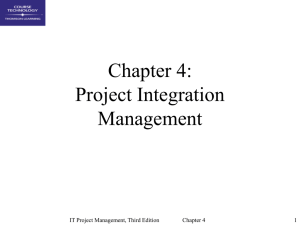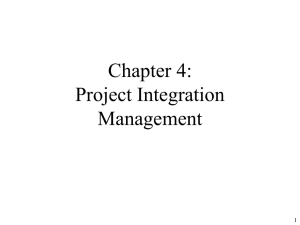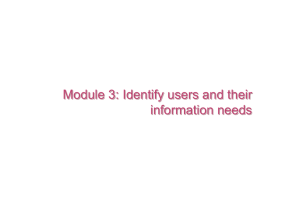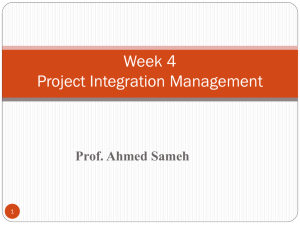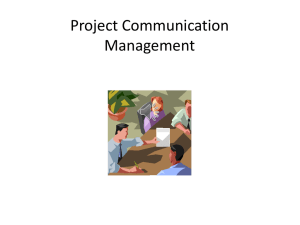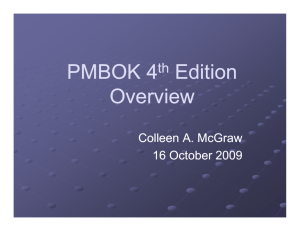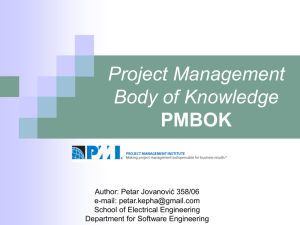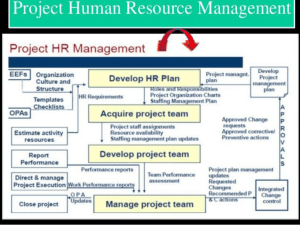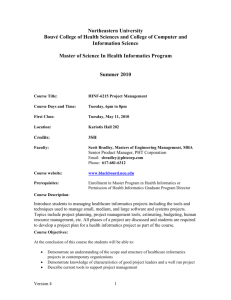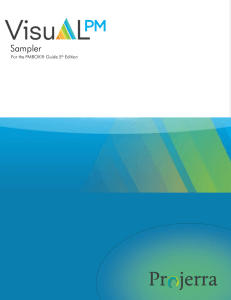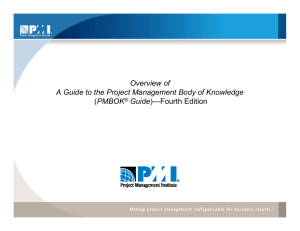Project Reports and the PMBOK
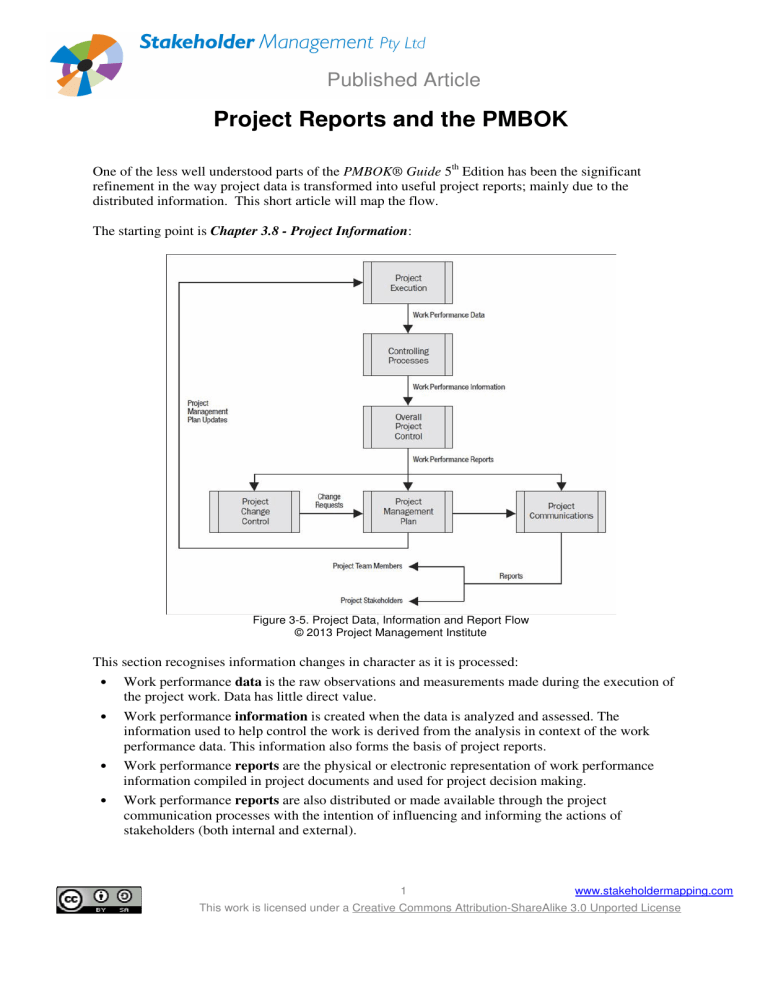
Published Article
Project Reports and the PMBOK
One of the less well understood parts of the PMBOK® Guide 5 th
Edition has been the significant refinement in the way project data is transformed into useful project reports; mainly due to the distributed information. This short article will map the flow.
The starting point is Chapter 3.8 - Project Information :
Figure 3-5. Project Data, Information and Report Flow
© 2013 Project Management Institute
This section recognises information changes in character as it is processed:
•
Work performance data is the raw observations and measurements made during the execution of the project work. Data has little direct value.
•
Work performance information is created when the data is analyzed and assessed. The information used to help control the work is derived from the analysis in context of the work performance data. This information also forms the basis of project reports.
•
•
Work performance reports are the physical or electronic representation of work performance information compiled in project documents and used for project decision making.
Work performance reports are also distributed or made available through the project communication processes with the intention of influencing and informing the actions of stakeholders (both internal and external).
1 www.stakeholdermapping.com
This work is licensed under a Creative Commons Attribution-ShareAlike 3.0 Unported License
Published Article
This overall flow is defined in more detail in each of the PMBOK’s knowledge areas.
The actual ‘work’ of the project is defined in process 4.3 Direct and Manage Project Work (and a limited number of other processes). These ‘work’ focused processes all have ‘work performance data’ as an output.
Figure 4-9. Monitor and Control Project Work Data Flow Diagram
© 2013 Project Management Institute
Assessing and analysing the data is part of the controlling process in each of the specialist knowledge areas from ‘scope’ to ‘stakeholders’. For example, process 13.4 Control Stakeholder Engagement has
2 www.stakeholdermapping.com
Published Article work performance data as an input and work performance information as an output (as do all of the other controlling processes).
These nine sets of specific work performance information pertaining to scope, time, cost, etc., are brought together in process 4.4 Monitor and Control Project Work , to produce work performance reports as an output. The consolidated information in these reports has a number of uses:
•
The information is of course used for internal project management purposes.
•
It also forms a key element of the project’s stakeholder communication (see below).
•
Another key element within this process is knowledge management, the gathering and using of lessons learned within the project and the wider organisation; this aspect is discussed in our White
Paper: Lessons Learned
1
.
•
Providing an audit trail of the project’s progress for archiving in the organisation’s ‘process assets’.
Process 10.2 Manage Communications receives the work performance reports as an input, and uses communication technology, models and methods to create, disseminate, store and ultimately dispose of performance reports and other project communications developed from the information contained in the reports . The art of effective communication is getting the right information to the right stakeholder, in the right format at the right time! For more on this see: The three types of stakeholder communication
2
.
Conclusion
Data is not information, information is not knowledge, knowledge is not understanding, understanding is not wisdom.
Clifford Stoll
Overall, the PMBOK® Guide 5 th
Edition has got the flow from raw data to useful reports (processed information) fairly well defined; the only challenge is knowing where to look! Hopefully the 6 th
Edition will do a better job of ‘joining up the dots’.
The subsequent challenge of gaining insight and knowledge through understanding the structured information contained in the reports and then using that understanding to make wise decisions is down to you!
The progress to wisdom is helped by concise analysis and effective report design, but also depends on the attitude and aptitude of the person receiving the information. Whilst various aspects of analysis are discussed, the key communication skills of information presentation and document design
3
are largely missing from this version of the PMBOK® Guide .
_____________________________
1
WP 1004 Lessons Learned : http://www.mosaicprojects.com.au/WhitePapers/WP1004_Lessons_Learned.pdf
2
Three types of stakeholder communication : http://www.mosaicprojects.com.au/Mag_Articles/SA1020_Three_types_stakeholder_communication.pdf
3
For more on document design see: http://www.mosaicprojects.com.au/WhitePapers/WP1065_Page_Layout.pdf
3 www.stakeholdermapping.com
Published Article
This article is part of Mosaic’s Project Knowledge Index to view and download a wide range of published papers and articles see: http://www.mosaicprojects.com.au/PM-Knowledge_Index.html
For more on the Stakeholder Circle® including White Papers, Published Papers, Books and reviews, see: http://www.stakeholdermapping.com/
4 www.stakeholdermapping.com

